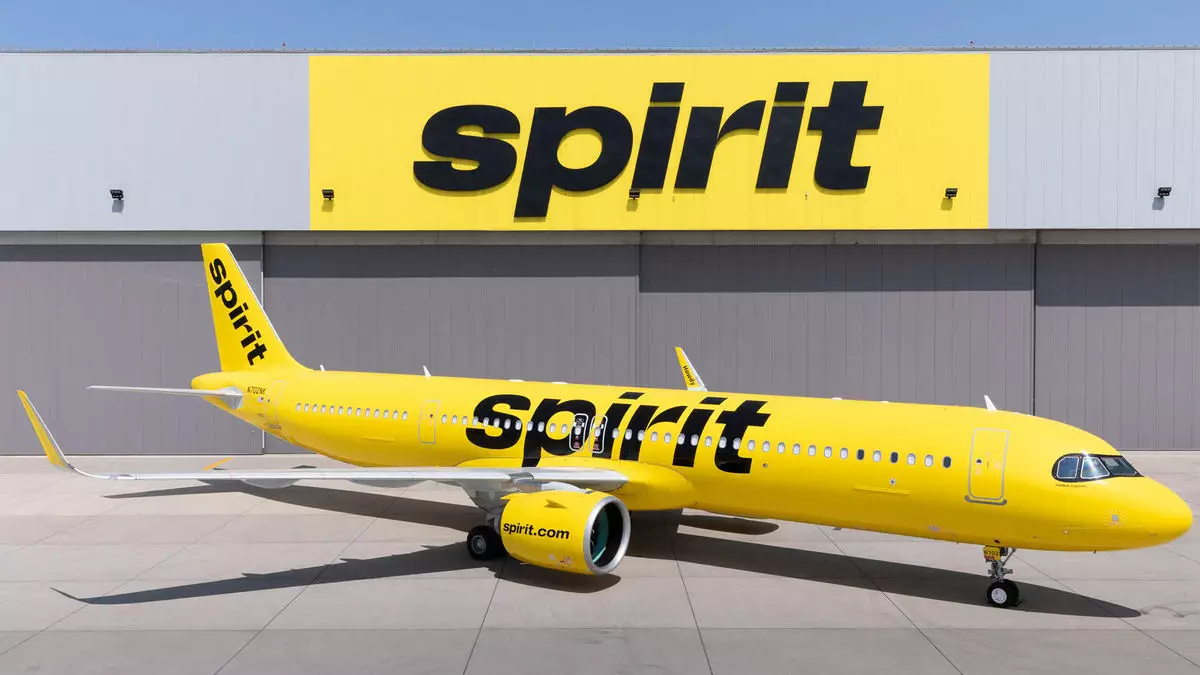Spirit Airlines has found itself in a precarious position as it embarks on a prearranged Chapter 11 bankruptcy process, claiming that this strategic move will chart a course for sustainable success. However, this optimistic outlook is met with skepticism by analysts who underscore the urgent need for the airline to stabilize its operations and reduce losses swiftly. This article delves into the various dimensions of Spirit’s restructuring efforts, the implications for stakeholders, and the challenges that lie ahead.
On November 18, Spirit Airlines announced a debt restructuring agreement with its bondholders, which involves converting a significant portion of its debt into equity and securing new funding. Specifically, bondholders will transform $795 million of Spirit’s debt into equity while also pledging $350 million to provide a fresh influx of cash. Furthermore, a $300 million loan aims to bolster the airline’s financial stability during this challenging period.
Despite these measures, analysts caution that Spirit’s financial outlook hangs in the balance. Francois Duflot of Bloomberg Intelligence highlighted the critical nature of time for the airline, stating that it has “quarters, to be honest, not years” to turn its fortunes around. The restructured deal potentially alleviates the burden of $1.6 billion in impending debt due by 2026, extending the repayment for $840 million to 2030. However, this favorable outcome could come at the cost of existing shareholder equity, essentially wiping it out.
One of the few silver linings amid Spirit’s financial upheaval is that operations will continue uninterrupted throughout the bankruptcy process. Passengers can still utilize flight credits and loyalty points, providing a semblance of normalcy during a turbulent phase. Spirit insists that it is poised to emerge from bankruptcy by the first quarter of 2025, aiming to position itself as a budget-friendly option in a fiercely competitive market.
However, this optimistic projection is set against a backdrop of stark challenges. Since the pandemic, Spirit has reported nearly $2 billion in operating losses, with a staggering operating margin of negative-27% during the third quarter of 2023. These figures paint a grim portrait of a carrier that once prided itself on robust financial performance but has since struggled to adapt to consumer inclinations shifting toward premium offerings.
Spirit’s financial predicament was compounded when a $3.8 billion merger deal with JetBlue was derailed by antitrust regulators. This rejection left Spirit scrambling to enhance its liquidity, cut costs, and generate higher revenue at a time when its reserves were dwindling. Faced with this significant hurdle, Spirit has undertaken various measures to draw in higher-spending customers, such as introducing new fare bundles and enhancing in-flight services.
Nonetheless, changing consumer perceptions presents a steep challenge. Scott Keyes, founder of the subscription flight service Going, emphasized that reversing long-standing brand perceptions is no small feat. Spirit has long been a target of jokes in popular culture for its stripped-down service model, which may deter higher-paying flyers despite the airline’s increased efforts to appeal to this demographic.
The immediate future for Spirit Airlines appears uncertain, with various paths lying ahead. Analysts like George Ferguson warn that airlines typically need liquidity equivalent to 20% of their annual revenues to operate effectively. With an anticipated revenue of $5.4 billion in 2023, Spirit aims to end 2024 with $840 million in liquidity. Without decisive actions to curtail cash burn, the airline risks facing dire consequences upon exiting Chapter 11.
As Spirit attempts to rebrand and revamp its operations to create loyalty among travelers, the approach requires time and a well-developed strategy. Implementing changes—including enhancements to customer service standards and modifications to its route network—while crucial, may take time to yield desired results. All the while, internal challenges will demand continuous adjustments in response to market dynamics and competitor strategies.
Spirit Airlines’ journey through bankruptcy is emblematic of the broader challenges facing low-cost carriers navigating a post-pandemic landscape. While the restructuring agreement brings some immediate relief, analysts stress the importance of rapidly stabilizing operations and attracting a newer, more lucrative customer base. The path ahead is fraught with uncertainty, yet crucial decisions made now may determine whether Spirit can soar to new heights or succumb to the pressures of a volatile industry. In aviation, as in life, the ability to adapt and respond to changing circumstances is paramount, and Spirit’s survival hinges on mastering this delicate balance.


Leave a Reply